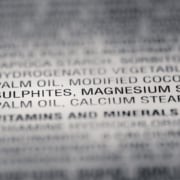Study Warns Brands to Rethink Clean Label Products
Reading Time: 3 minutes
Clean label products are are the fastest growing market in the food and beverage industry. While this movement is trending, it leaves a lot of gray areas—not only for the food manufacturers but also for the retailers and consumers. Unfortunately, there is no single definition of the word “clean label” even if it has been around for a few years. This has led to a lot of confusion among many people.
A joint study from the Food Marketing Institute and Solutions for Retail Brands called “The Clean Label Phenomenon for Food Retailers: Enhancing Transparency for consumers” is aimed at determining what consumers think about clean labels.
The Definition of Clean Label
So, what are clean label products? The conventional definition indicates that products are made from natural ingredients devoid of artificial additives, preservatives, and flavoring. Other definitions also include food that comes with ultimate authenticity as well as trustworthiness. The thing is that clean label is often interchanged with the word “natural” that is way too far from the truth. Currently, there is no legal definition of a clean label, and the lack of a precise definition and consistency makes it confusing for everyone.
If you are a follower of the clean label movement, it is crucial to know which foods come with clean labels and which ones do not. While it is apparent among consumers that preservative and additives are not included in the clean label food list, 65% of shoppers are still confused such that they tend to avoid ingredients like sugar and salt actively. People consider GMO foods not to be clean label products.
Problems Involving the Clean Label Movement
Aside from the vague definition of “clean label,” another issue involving this movement is transparency. While consumers want more straightforward ingredient lists, what they want more is greater transparency. Further, different generations of consumers also demand different qualities from clean label products. The differing needs from each generation of consumers also mean that they have differing views on different brand labels. For instance, consumers that prefer free-from-modifications products may view other traditional unaltered products unacceptable.
While there are some problems involved in the clean label movement, food manufacturers and retailers can address these issues by being transparent when it comes to how they interpret the word “clean label.” For some companies, they may view clean labels as non-GMO ingredients while some might focus on how the ingredients are processed.
How to Solve the Problems with Clean Label Products
In fact, European companies are more receptive towards the clean label movement. The food industry in the United States can learn from European companies. To date, only 27% of packaged foods are marketed with a clean label to which private brands make up the most substantial amount of sales. While the sales of products that are packaged as a clean label are still meager in the United States, it will eventually grow as more and more people become more aware and conscious of the foods that they are eating. Hopefully, in the future, clean label products will be better defined so we can all get behind eating better for you foods.
Inspired by www.fooddive.com



